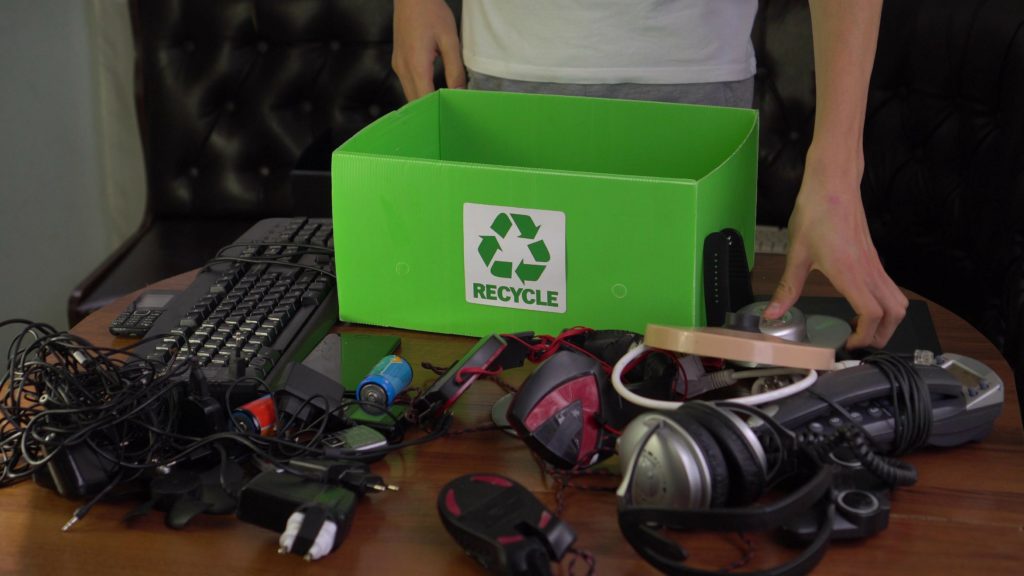
As countries scrutinize mineral supply chains needed to fuel the clean energy transition, one potential source is hiding in junk drawers and trash cans all over the world. An estimated 5.3 billion phones will fall out of use this year, according to data from the United Nations Institute for Training and Research (UNITAR) for the Global e-Waste Monitor — adding to what researchers call a largely untapped “urban mine” that could be used for new technology like solar panels, wind turbines and electric-vehicle batteries.
While return rates vary by country, globally just 17% of electronic waste is collected and recycled on average, according to Dr. Kees Baldé, a senior scientific specialist at UNITAR’s Sustainable Cycles Programme and a lead researcher behind the Global e-Waste Monitor. Many devices end up in landfills, which is both a hazardous pollution problem and a waste of vast quantities of metals and minerals, such as copper and palladium, that could be recycled into new products. In a press conference, Baldé noted that the mining, refining and processing involved in producing a mobile phone accounts for 80% of the greenhouse gas emissions produced throughout its life. By repurposing old phones, users can cut those emissions significantly.
Boosting recycling will require cleaning out some closets, though. One survey by the Waste Electrical and Electronic Equipment Forum of 8,755 households in Europe found that a single household contains 74 electronic devices on average — from phones to laptops to toasters — 13 of which are not in use but kept around for potential reuse, repair, resale or sentimental reasons. Mobile phones are particularly susceptible to what the UNITAR researchers describe as device “hoarding,” along with headphones, remote controls, clocks, irons, external hard drives, routers, keyboards and mice.
“People tend not to realize that all these seemingly insignificant items have a lot of value, and together at a global level represent massive volumes,” said Pascal Leroy, director general of the WEEE Forum, in a statement. “It is very easy for [small e-waste items] to accumulate unused and unnoticed in households, or to be tossed into the ordinary garbage bin.”
Baldé says that the urban mine of e-waste — approximately 54 million metric tons today — is going to double in the next three decades.
The European Union’s rate of e-waste recovery, at 55%, is significantly higher than in the rest of the world, due in part to decades of legislation. Member states have strict weight-based e-waste collection targets, which tend to skew toward heavier objects, contributing to the conundrum of hoarded phones.
“Having legislation is the first requisite,” Baldé told Bloomberg. Legislation provides financial incentives for consumers and companies to develop collection systems, ensuring that recovered devices arrive at compliant channels. “For the first time in history, the growth in the collection of e-waste has been faster than the growth of the mountain of e-waste in the European Union,” Baldé said.
In the US, there is no nationally regulated e-waste management system, but some states and companies have their own collection schemes. Apple, for example, routed 38,000 metric tons of electronic waste to recycling in its 2021 fiscal year, according to the company’s environmental progress report, and was able to repurpose materials like copper and gold. Samsung recycles 100 million pounds of e-waste each year, said Mark Newton, the company’s head of North America corporate sustainability, upcycling a portion of old Galaxy phones into childcare monitors and low-cost medical diagnosis cameras. Customers of both companies can also hand in their old phones for discounts, or buy refurbished phones at a discounted price.
“We want consumers to rethink that journey of their devices,” Newton said. “Because even if they’re ready for a new one, the old one still has plenty of life to give.”
(By Erin X. Wong, with assistance from Eric Roston)
Comments